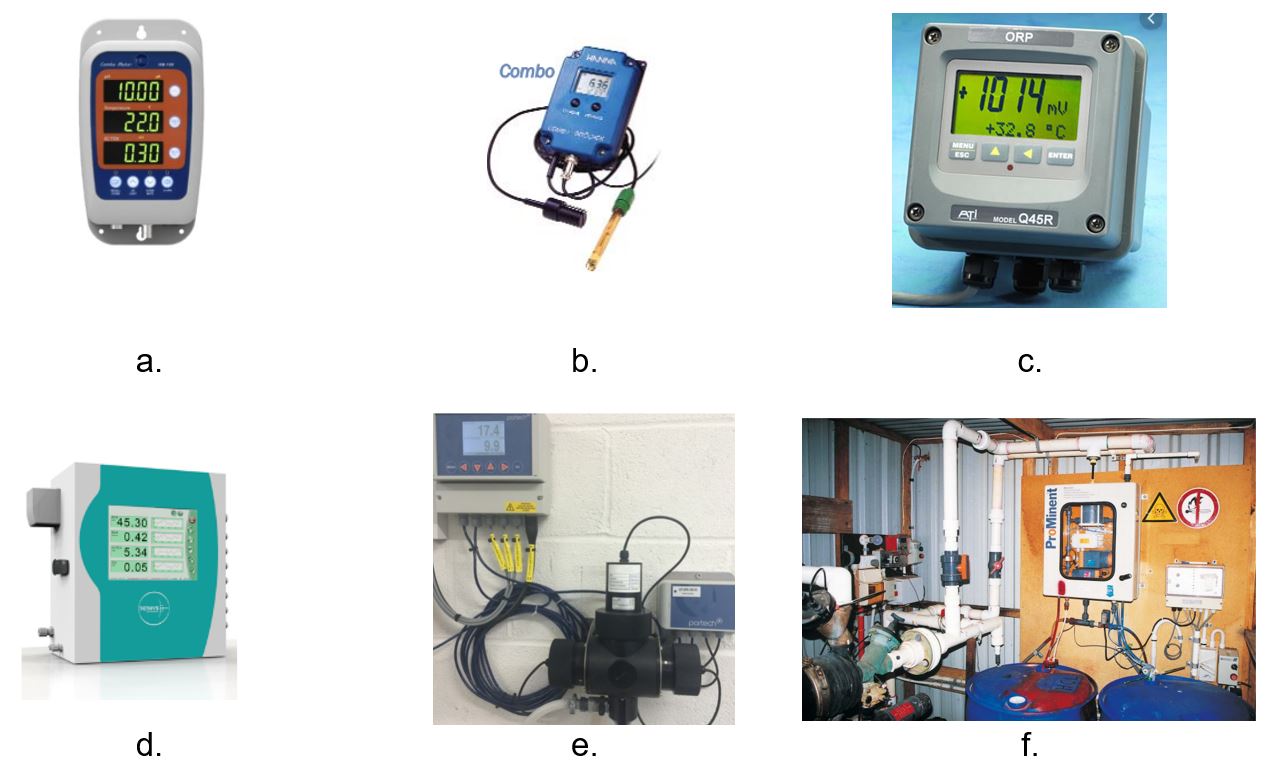Using automated chemical dosing systems and water meters provides real-time information on water use, water quality and disinfection successes, enabling quick decisions and issue mitigation reducing the potential bird health implications (see Figure 9 for examples). Most of these systems can be monitored and controlled remotely, saving on labour requirements.

pH / EC / TDS meter—pH and EC can indicate changing source water quality, the effectiveness of disinfectant in the distribution system.
Oxidation-reduction potential (ORP) meters—ORP is a measurement that indicates the degree to which a substance is capable of oxidising another substance. The ORP meter can be a useful tool for identifying water supplies that have inadequate chlorine residual and for adjusting the residual without overusing chlorine. Note: this will only work on disinfectant that oxides.
UV or colour monitor—This indicates the concentration of organic matter.

